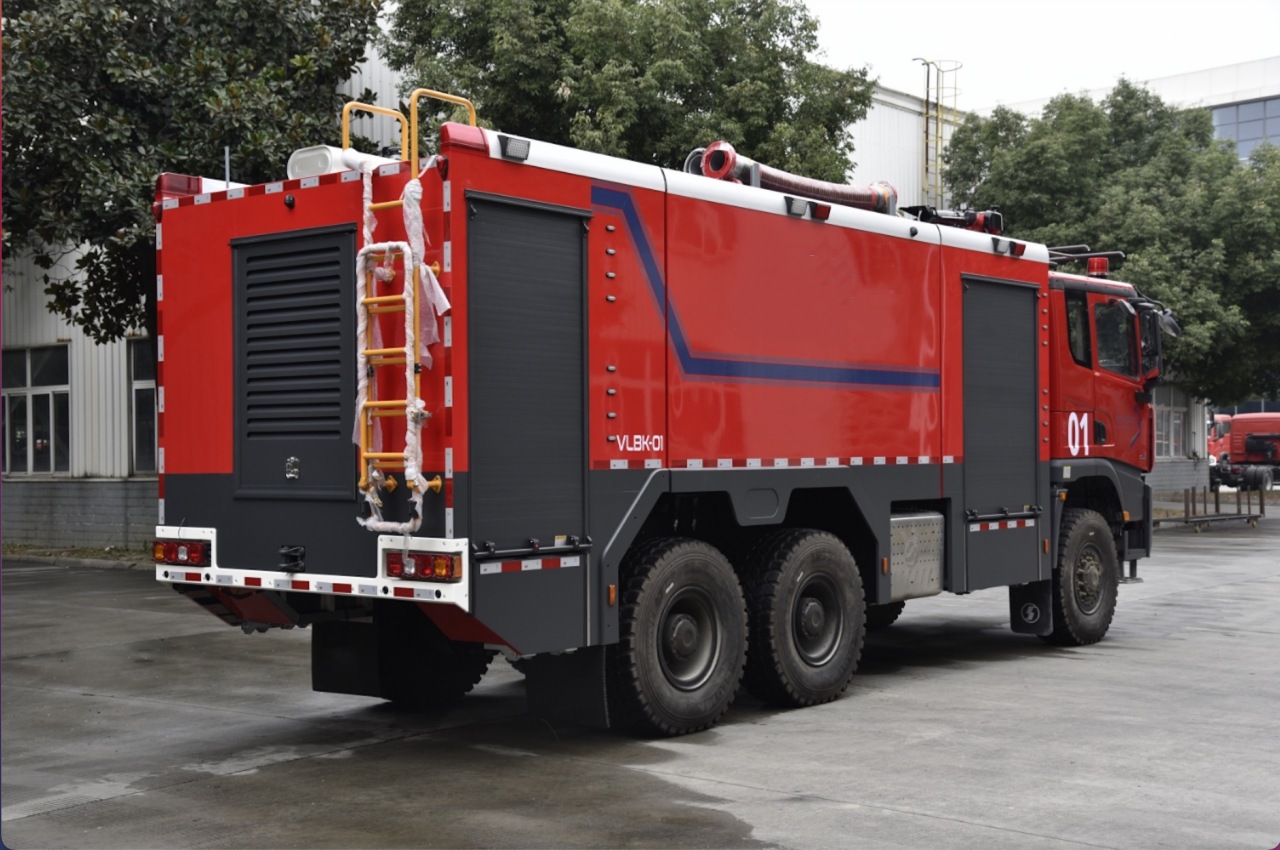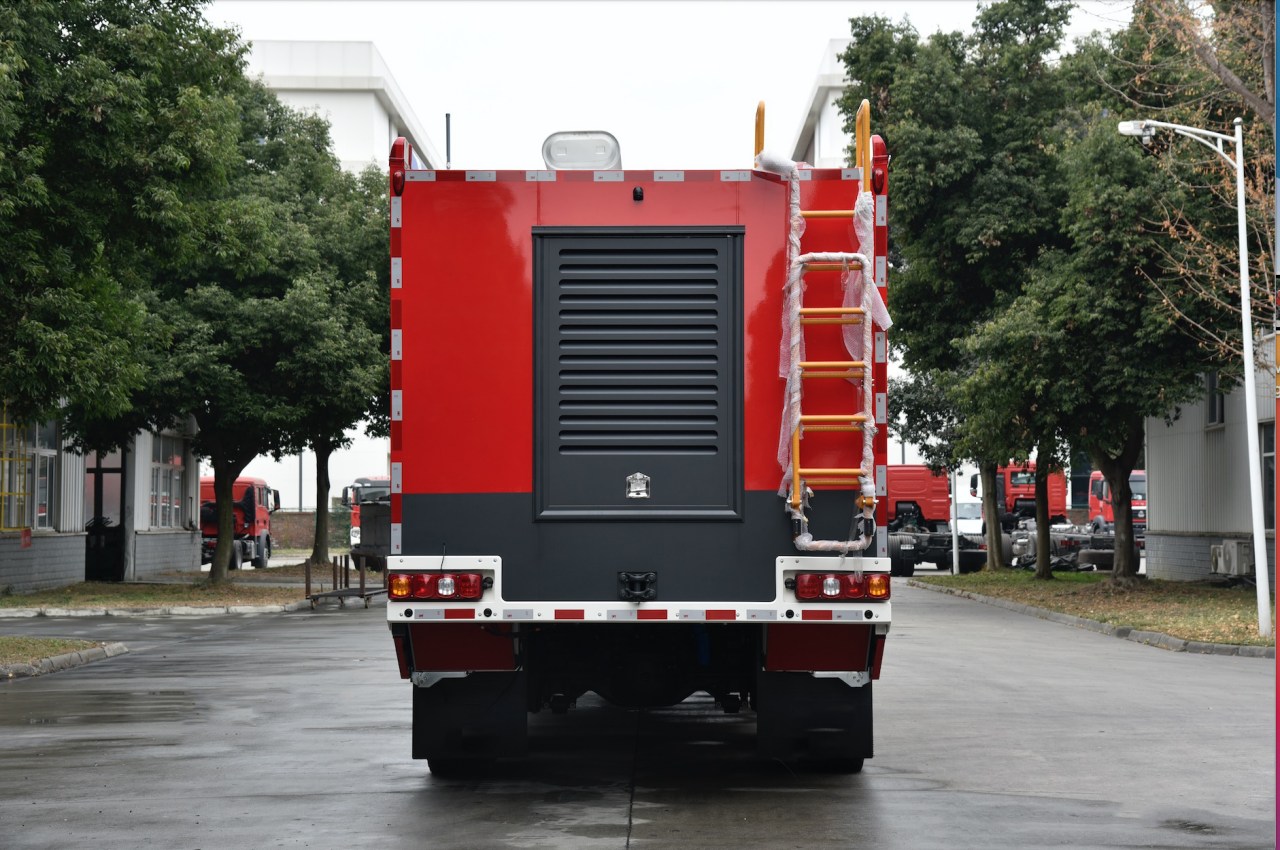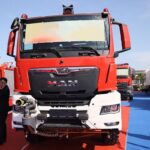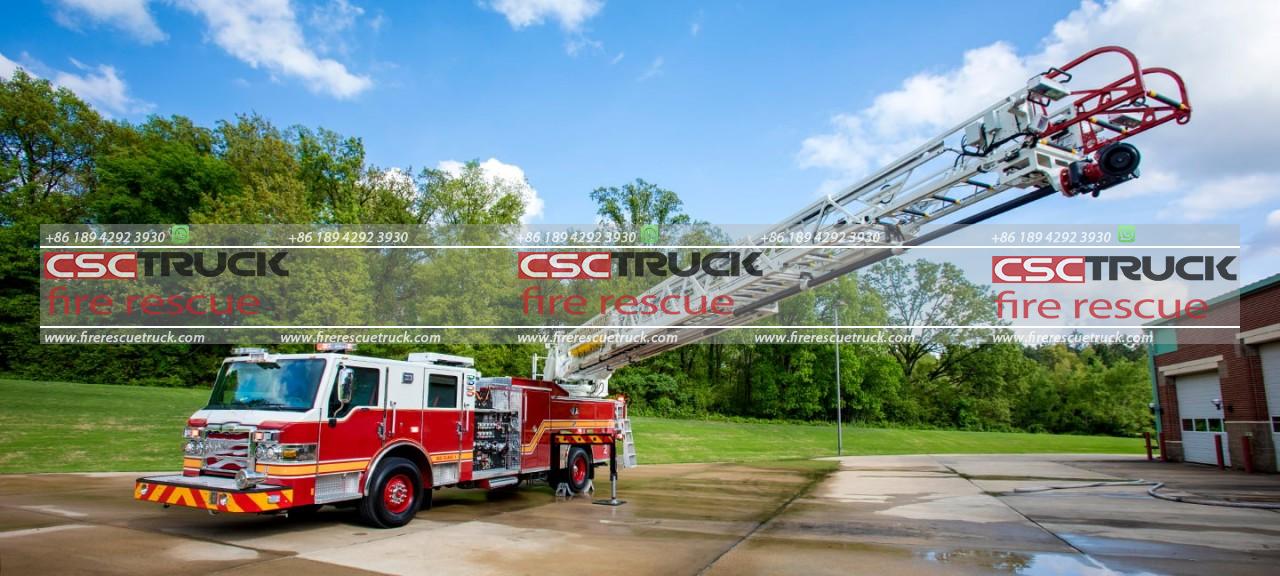Introduction
Airport fire trucks, also known as Aircraft Rescue and Firefighting (ARFF) vehicles, are critical to aviation safety. Unlike municipal fire trucks, ARFF vehicles are designed to respond rapidly to aviation emergencies, including aircraft fires, fuel spills, and rescues. Given the unique challenges of airport firefighting, these specialized trucks incorporate advanced technologies and features to maximize efficiency and effectiveness. This article explores the key features and the latest innovations in airport fire trucks, highlighting their role in enhancing safety and response capabilities.

Key Features of Airport Fire Trucks
1. High-Speed Response Capability
ARFF vehicles are built for speed and maneuverability to reach emergency sites within minutes. These trucks typically feature powerful engines, with some models capable of accelerating from 0 to 80 km/h (50 mph) in under 25 seconds. This rapid acceleration is crucial for meeting the International Civil Aviation Organization (ICAO) and Federal Aviation Administration (FAA) response time standards, which require fire trucks to reach any part of the runway within three minutes.
2. Large Water and Foam Capacities
Airport fire trucks carry substantial quantities of firefighting agents to handle large-scale fires effectively. The water tanks can hold between 2,000 and 12,000 liters (530 to 3,170 gallons), while foam tanks typically carry 200 to 1,500 gallons of aqueous film-forming foam (AFFF). In addition, many ARFF vehicles have onboard dry chemical or Halotron systems for combating fuel fires.
3. Advanced Pumping and Discharge Systems
These trucks are equipped with high-capacity pumps capable of delivering thousands of gallons per minute. Roof and bumper turrets allow firefighters to discharge water or foam at high pressures and long distances. Some turrets have adjustable flow rates, enabling them to adapt to different fire scenarios. Many modern ARFF vehicles also feature under-truck nozzles for suppressing fuel fires under the aircraft fuselage.
4. All-Terrain Capabilities
Unlike conventional fire trucks, ARFF vehicles are designed to operate on various terrains, including paved runways, grassy fields, and rough ground. Features such as all-wheel drive (AWD), independent suspension, and large off-road tires enable these trucks to navigate through difficult conditions and reach emergencies quickly.
5. Ergonomic and High-Tech Cab Design
The cabs of modern ARFF vehicles are designed for efficiency and visibility. Panoramic windshields provide a broad field of view, while advanced instrumentation and control panels facilitate quick decision-making. Many vehicles now incorporate touchscreen interfaces and heads-up displays (HUDs) to assist operators in managing firefighting operations efficiently.
6. Rapid Agent Deployment Systems
To control fires as quickly as possible, ARFF trucks utilize pre-connected hose reels and turret systems that can discharge agents without requiring firefighters to exit the vehicle. This feature is particularly critical in the initial response phase, reducing firefighter exposure to hazardous conditions.
7. Specialized Rescue Equipment
Many ARFF trucks are equipped with onboard tools such as hydraulic cutters, spreaders, and rescue saws to facilitate aircraft entry and extrication. These tools are essential for responding to post-crash rescue operations where passengers may be trapped inside a burning or damaged aircraft.

Latest Innovations in Airport Fire Trucks
1. Electrification and Hybrid Powertrains
With a growing focus on sustainability, manufacturers are developing electric and hybrid ARFF vehicles. These trucks reduce emissions while maintaining performance. Notable examples include the Rosenbauer Panther Electric, which features a fully electric drivetrain, and Oshkosh’s Striker Volterra, a hybrid-electric ARFF vehicle that combines electric power with a traditional diesel engine to enhance fuel efficiency and reduce environmental impact.
2. Remote-Controlled Firefighting Systems
Some of the latest ARFF vehicles incorporate remote-controlled turrets and robotic firefighting systems. These allow operators to combat fires from a safe distance, reducing firefighter risk. Automated systems can also deploy fire suppressants precisely, improving firefighting effectiveness.
3. Augmented Reality (AR) and Artificial Intelligence (AI) Integration
Modern airport fire trucks are beginning to leverage AR and AI to improve response capabilities. AR-equipped helmets and HUDs provide real-time navigation, fire assessment, and thermal imaging data, enabling firefighters to make informed decisions in high-pressure situations. AI-driven predictive analytics also assist in maintenance, ensuring vehicles remain in optimal condition.
4. Thermal Imaging Cameras and Advanced Sensors
New-generation ARFF vehicles feature thermal imaging cameras and heat-detecting sensors that enhance visibility in low-visibility conditions such as smoke-filled environments. These cameras help locate fire hotspots, detect survivors, and improve situational awareness.
5. Smart Water and Foam Management Systems
To optimize firefighting efficiency, some ARFF vehicles now include smart water and foam management systems. These systems automatically adjust water-to-foam ratios based on fire intensity, ensuring the most effective use of available firefighting agents.
6. Drone-Assisted Firefighting
Drones are increasingly being integrated into airport firefighting operations. Equipped with high-resolution cameras and thermal sensors, drones provide aerial views of the fire scene, helping firefighters assess the situation before deploying resources. Some ARFF vehicles come with onboard drone launch systems for real-time surveillance.
7. Improved Cabin Safety and Automation
Enhanced cabin safety features, such as impact-resistant structures, advanced seat restraints, and climate-controlled interiors, provide better protection for firefighters. Automation technologies, including semi-autonomous driving systems, assist drivers in navigating complex airport layouts and reaching emergency sites more efficiently.

Conclusion
Airport fire trucks are evolving rapidly, incorporating cutting-edge technologies to improve response times, efficiency, and firefighter safety. From high-speed mobility and large firefighting agent capacities to AI-driven analytics and electric powertrains, these innovations are transforming ARFF vehicles into more effective emergency response tools. As airports continue to expand and air travel increases, the role of these specialized fire trucks will remain crucial in ensuring the safety of passengers and aviation personnel worldwide.







